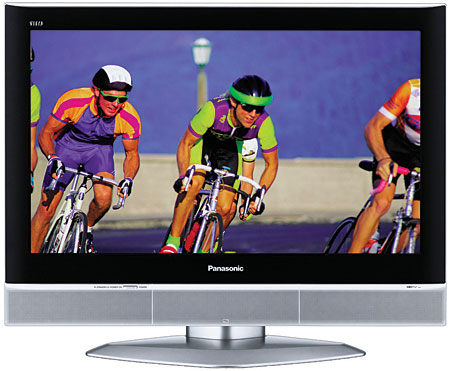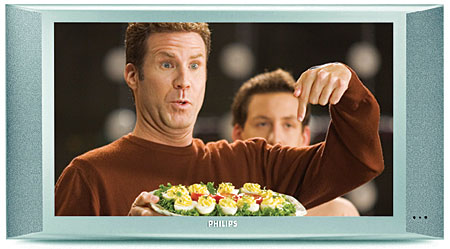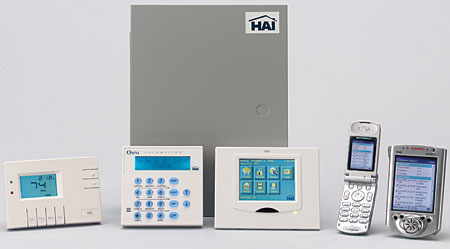Green Is Good
Believe it or not, you can do both.
I dabble in environmentalism. I'm not devoted enough to take up residence in a redwood to prevent it from being cut down, but I turn off the water faucet while I brush my teeth. In other words, I care, but I'm lazy, so I'm always looking for easy ways to help save the planet. My poor husband tacitly accepts the parade of "environmentally responsible" products that come through the house—from organic shampoos, to natural cleaning solutions, to toilet paper made of 100-percent recycled paper.
 Like many of you, my best expression of environmental awareness comes in the form of recycling. A recycle bin has taken up permanent residence beside my trash can, and it's become second nature to check for that little triangle when I toss anything out. The other day, after I replaced a defective component video cable, I stood before the two bins, cable in hand, realizing I had no idea how to responsibly dispose of it.
Like many of you, my best expression of environmental awareness comes in the form of recycling. A recycle bin has taken up permanent residence beside my trash can, and it's become second nature to check for that little triangle when I toss anything out. The other day, after I replaced a defective component video cable, I stood before the two bins, cable in hand, realizing I had no idea how to responsibly dispose of it.
My glance turned to my home theater. What would I do with that equipment once it died or met with the inevitable upgrade? Sure, you can sell or donate functioning equipment, but what if it's broken or just plain obsolete?
How to dispose of old equipment isn't the only environmental concern, either. There's the small issue of power. When you peruse that glorious electric bill each month, you probably give at least a little thought to how much energy your system consumes when you use it, but have you thought about how much you're spending on wasted power—the power those hungry components nibble on when the system sits idle? You could be sacrificing a lot of dollars without even knowing it. (See this month's GearWorks column on page 34.)
Star Gazing
The easiest way to save power and money is to think about the issue before you buy your gear, not after. When you shop for your next TV, receiver, or DVD player, look for the Energy Star label, the Environmental Protection Agency's seal of approval. You probably know to look for this label when buying a refrigerator but give it nary a thought when you browse the consumer electronics department.
In the case of home electronics equipment, Energy Star certification specifically addresses the problem of wasted power. Any component that you can turn on using a remote control isn't truly off; it's in standby mode, anxiously awaiting a signal to wake it up—and it's using electricity in the process. In order for a product to receive the Energy Star insignia, it must use 1 watt of power or less when it's in standby mode.
For a list of Energy Star products available in each home electronics category, go to www.energystar.gov and click on "products." You'll find products by most of the major home theater manufacturers. Panasonic and Philips deserve special note for their commitment to energy-saving, environmentally conscious designs. Panasonic offers more than 475 Energy Star products and recently won a 2005 Energy Star Partner of the Year award in the Efficient Products category. Philips' EcoDesign program requires designers to consider environmental factors like weight, energy consumption, hazardous materials, and recyclability at every stage of product development.

Panasonic TC-32LX50 Energy Star LCD HDTV
You should also look for Energy Star light bulbs for all those wonderful accent lights in your theater. And, if you just so happen to be in the market for a new home, the Energy Star program certifies those, too.
The EPA estimates that, in 2004, the Energy Star program saved $10 billion and enough energy to power 24 million homes. This year, those numbers could see a nice jump because the EPA has added the external power supply (EPS) to the Energy Star program—that adapter that comes with the laptops, printers, camcorders, MP3 players, and cell phones. Energy Star–certified power adapters are 35 percent more efficient than conventional adapters and could save more than 5 billion kilowatt-hours of energy. The Energy Star label will appear on the packaging for a product that uses an external power supply, so be on the lookout.
Waste Not, Spend Not
Whether or not you own Energy Star products, you can still take steps to control power usage around your home—the most obvious one being to turn off equipment and lights when you aren't using them. But we just established that many products aren't really off when they're off, and it's unrealistic and impractical to expect people to unplug all of their gear when it's not in use.
You might not be able to completely eliminate wasted power in your home theater, but you can reduce it. If your equipment draws power from the outlet while it's in standby mode, reduce the number of components connected to the outlet. Consider a product like Niles' APC-2 current-sensing switcher. Connect your gear to the APC-2 and the APC-2 to the switched outlet on your receiver or pre/pro. As the name suggests, the box senses when you turn on the receiver and switches on the rest of the equipment. It's an easy way to turn your gear on and off, and the receiver becomes the only device in standby mode. Obviously, you wouldn't want to connect a DVR, VCR, or other time-based device to this type of product. Also keep in mind that some products lose their settings when they lose power.
And what about all those external power supplies that aren't charging anything at this moment? If you're like me, you tend to plug in the adapters and leave them there until the device of choice needs power. Try plugging all of your adapters into one power brick that you can easily unplug when nothing is connected to it.
Why worry excessively about conserving energy when a home-automation system can do it for you? Manufacturers usually tout convenience as the main reason to automate your home, but systems from companies like Crestron, Leviton, and AMX can also save you money in the long term by controlling your home's temperature, lighting, and/or multiroom A/V system. Consider HAI's Omni system, which uses Energy Star–certified thermostats that automatically adjust individual rooms, including the home theater, based on occupancy, time of day, or action. It can also automatically dim the lights or turn them off altogether—as well as shut off the multiroom audio—in rooms you're not using. HAI estimates that an Omni system can save you up to 20 percent on your energy bill for a cost beginning at $1 to $2 per square foot installed.

Philips 30PF9975 Energy Star LCD TV
If you're truly committed to energy efficiency, the EPA offers a program called Home Performance with Energy Star, in which a contractor will do a complete inspection of your home to determine problem areas and tell you how to make it operate more efficiently.
Where All Good Electronics Go to Die
When it comes to getting people to recycle, one rule applies: The easier, the better. In-home recycling programs have been so successful because all you have to do is throw recyclable products into a separate bin and take it to the curb. Someone else handles the rest. If we had to drive all over town to drop off plastics at one place, glass at another, and aluminum somewhere else, chances are that most people would just toss stuff in the garbage. I'm sad to admit that I probably would.
Unfortunately, in the electronics realm, this is what we're asked to do, and it's probably why so much electronic waste, or e-waste, is stacking up in homes and landfills across the country. Maybe someday, in-home recycling will include a bin for electronics—something in a nice eggplant color, perhaps—but, until then, it's going to take a little effort (and, in some cases, a little cash) on our part.
Table 1 includes several Websites that can help you find a local or national recycling service for your consumer electronics equipment. There are quite a few national programs in place for wireless and computer supplies at stores like Staples, Best Buy, and Office Depot. From time to time, these stores (often in conjunction with manufacturers) sponsor e-waste recycling events in which you can bring TVs, receivers, and other A/V equipment in to be recycled, usually for a small fee. However, there's no national program in place at these stores to take in home electronics gear.
The EPA has created the Plug-in to eCycling program to promote the importance of electronics recycling, get more communities and manufacturers involved in the effort, and develop/test pilot recycle projects. To be part of the program, a manufacturer or retailer must commit to underwrite the cost of at least one recycling event per year.
While the EPA's program is voluntary, California has gone a step further and passed a first-of-its-kind mandatory electronics recycling law, the Electronic Waste Recycling Act of 2003. As of January 1, 2005, California consumers are charged a fee of between $6 and $10 when they purchase a product with a 4-inch or larger video screen, including LCDs and CRTs. That money funds authorized e-waste collectors and recyclers. True, the law only applies to display products right now, but it's a start. About a half dozen other states are considering following California's lead. For more info, California consumers can go to www.erecycle.org. One of the most exciting, new e-waste recycling efforts is eBay's Rethink Initiative (rethink.ebay.com), which unites manufacturers, government agencies, environmental groups, and eBay users with one common goal: disposing of e-waste. It educates eBay users on the subject and provides recycle and donation information, including kits to set up your own collection events. But it also taps into eBay's driving philosophy: No matter how useless you think something is, someone out there is willing to spend money on it. Through the site, you can sell your old gear yourself, find a sales expert to do it for you, or trade it in for cash.

HAI Omni LT Home-Automation System
The eBay approach recognizes a universal truth: Some of us may be motivated by environmental issues, but all of us are motivated by money, be it saving some or earning some. Regardless of which green motivates you, the goal is to be motivated. Taking simple steps to reduce power and recycle equipment can make a big difference but requires little effort. Now, that's my kind of activism.
* Thanks to David Thompson and Mark Sharp from Panasonic's Corporate Environmental Department for their help with this article.
A Global Solution
Recycling e-waste isn't just about eliminating clutter at the landfill. It's about effectively reusing the raw materials and dealing with the hazardous substances inside the devices, such as lead, cadmium, and mercury, that can contaminate soil and water tables. The European Union has passed the Restriction of Hazardous Substances (RoHS) directive that requires manufacturers who want to sell their electronics products in Europe to meet minimum standards for lead, mercury, cadmium, chromium, and other materials by July 6, 2006. Since many international companies distribute essentially the same products throughout the world, Americans will likely see a reduction in these substances, too. For instance, by the end of the first quarter of 2005, 75 percent of Philips' products were already compliant with the directive, while 100 percent of Panasonic's products were compliant by October 2005.
Table 1
Earth Links: Websites for the Green Consumer
www.earth911.com—This site has information on just about anything you want to recycle, as well as tips for a greener lifestyle.
www.eiae.org—The Electronic Industries Alliance's Website has an extensive list of recycling centers and can teach you more about the materials used in your electronic products.
www.epa.gov/epaoswer/osw/conserve/plugin/index.htm—The EPA's Plug-in to eCycling Website provides information for consumers and companies looking to join the program.
rethink.ebay.com—The Rethink Initiative offers resources for eBay users looking to dispose of their old electronics.
www.greendisk.com—Looking for a way to recycle all those useless DVD-Rs and CD-Rs? Check out this progressive site, which also sells discs and disc holders made of recycled material.
























































